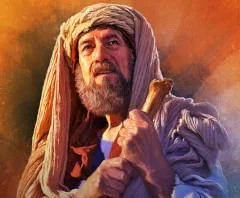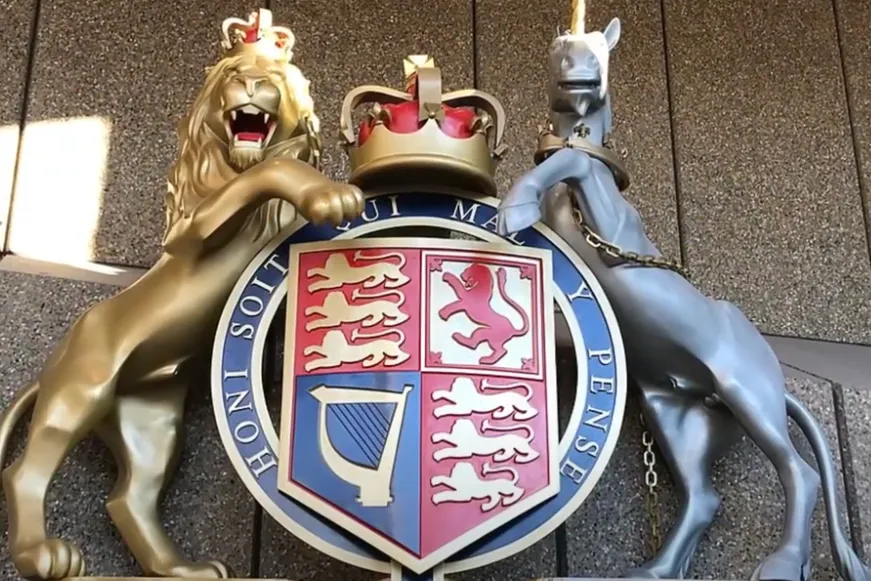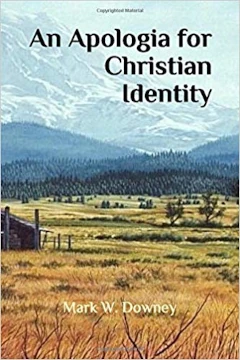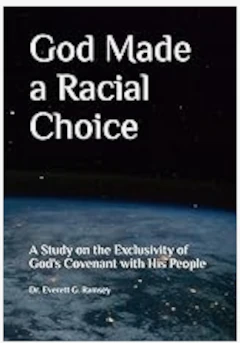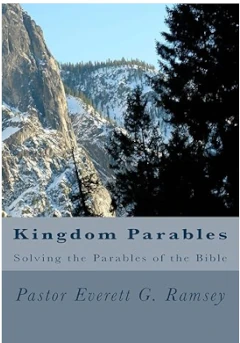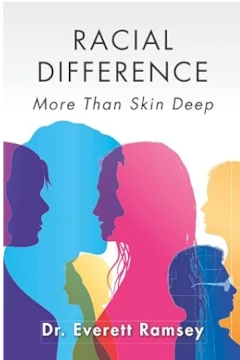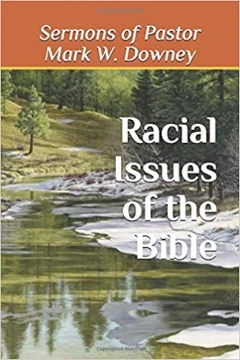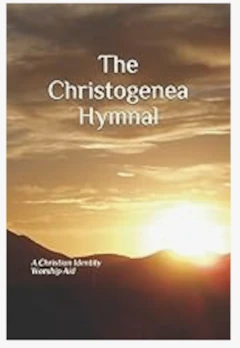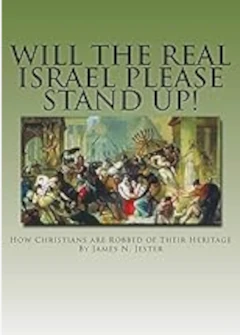What Happened at Bethbarah?
by Pastor Don Elmore
July 20, 2014
Scripture Reading: Judges 7:24, 25
This scripture reading tells of the victory that Israel had over the Midianites when they slew the two princes of that nation. Remember that God had told Gideon 32,000  troops that Israel had, they would vaunt themselves against their God, saying, “Mine own hand hath saved me” (Judges 7:2). So God instructed Gideon to eliminate 31,700 of the 32,000 troops: Israel only had 300 soldiers left to fight the battle against the Midianites and Amalekites (Judges 7:6). That is lowering the number of Israel’s army by over 99%!
troops that Israel had, they would vaunt themselves against their God, saying, “Mine own hand hath saved me” (Judges 7:2). So God instructed Gideon to eliminate 31,700 of the 32,000 troops: Israel only had 300 soldiers left to fight the battle against the Midianites and Amalekites (Judges 7:6). That is lowering the number of Israel’s army by over 99%!
The army of Israel was cut by over 99+%. First, all those who were afraid were let go; that was 22,000. Then 9700 men were let go who drank from the pond by putting their mouth in the water. This left only 300 to fight against an army of over 135,000! It lowered the odds from 1 to 5 to around 1 to 500. The soldiers of Gideon, which included men (no women) from the tribes of Manasseh, Asher, Zebulun, Naphtali and later Ephraim pursued after the Midianites and destroyed the enemy leaders named Zebah and Zalmunna and over 135,000 soldiers of the Midianites. He was so successful that the “men of Israel said unto Gideon, Rule thou over us, both thou, and thy son, and thy son’s son also; for thou hast delivered us, from the hand of Midian” (Judges 8:22). Gideon answered: “I will not rule over you, neither shall my son rule over you; the LORD shall rule over you” (Judges 8:23).
The soldiers of Gideon, which included men (no women) from the tribes of Manasseh, Asher, Zebulun, Naphtali and later Ephraim pursued after the Midianites and destroyed the enemy leaders named Zebah and Zalmunna and over 135,000 soldiers of the Midianites. He was so successful that the “men of Israel said unto Gideon, Rule thou over us, both thou, and thy son, and thy son’s son also; for thou hast delivered us, from the hand of Midian” (Judges 8:22). Gideon answered: “I will not rule over you, neither shall my son rule over you; the LORD shall rule over you” (Judges 8:23).
Gideon dwelt in his own house for the last forty years of his life. And he died when he was a good old age. And it followed that after he was dead, that the children of Israel turned again, and played the harlot with Baalim, and made Baal-berith their god.
In Psalm 83, both of these nations, the Amalekites (verse 7) and Midianites (verse 9) are mentioned as being enemies of Israel. This victory of Gideon is reflected in this Psalm when King David longed for the victory over Israel’s future enemies. “Make their nobles like Oreb and Zeeb: yea, all the princes as Zebah, and as Zalmunna, (verse 11).” It looked forward to a time when their adversaries would be confounded forever (verse 18).
 Elijah's Departure
Elijah's Departure
When Elijah made his departure, he traveled from Gilgal to Bethel to Jericho to the Jordan River. Elisha was with him. Elijah took his mantle and wrapped it together, and smote the Jordan River, and the waters were divided to the one side and to the other, so that the two went over on the ground to Bethbarah (2 Kings 2:1-11). Very similar, but different, as to how Israel crossed the flooded Jordan River.  Elijah was soon departed from Elisha. Elisha took the mantle of Elijah that fell from him when he departed in the tornado, and went and smote the water of the Jordan River and crossed back to the Western side. He began his ministry without Elijah with a disagreement over Elijah’s departure with the other priests.
Elijah was soon departed from Elisha. Elisha took the mantle of Elijah that fell from him when he departed in the tornado, and went and smote the water of the Jordan River and crossed back to the Western side. He began his ministry without Elijah with a disagreement over Elijah’s departure with the other priests.
A Few Incidents
The town of Bethabara (Beth-barah) played an important role in the life of Jesus, as he returned there many times after his baptism. He went there, for example, after the jews failed to kill him in Jerusalem; “Therefore, they [jews] sought again to take him; but he escaped out of their hand. He went away again beyond Jordan [Bethabara] into the place where John at first baptized; and there he abode” (John 10:39, 40).
“Beyond Jordan” is, of course, also the place where the Camp of Israel was located just before they entered the Promised Land! Undoubtedly this site had a strong impact on the mind of Jesus as he would have been very familiar with the Biblical events that took place there. After Jesus was baptized, he was tempted in the wilderness nearby. He used the words of Deuteronomy to counter the temptations of the devil. Moses wrote the Book of Deuteronomy while Israel was encamped “beyond Jordan” at Beth-barah or Bethabara.
Baptism of Jesus
Matthew 3:6-9
6) “And were baptized by him in the Jordan, confessing their sins.
7) But when he saw many of the Pharisees and Sadducees come to his baptism, he said unto them, O generation of vipers, who hath warned you to flee from the wrath to come?
8) Bring forth, therefore, fruits befitting repentance.
9) And think not to say within yourselves, We have Abraham as our father; for I say unto you that God is able of these stones to raise up children unto Abraham.”
Verse six tells us that John was baptizing in the Jordan River. It was while he was baptizing others that many of the Pharisees and Sadducees came and then John the Baptist said unto them something that was very offensive to them. More on these offensive words later.
In the book of John it tells us exactly where he was baptizing:
John 1:28 “These things were done in Bethabara [Beth-barah] beyond the Jordan, where John was baptizing.” The word Bethabara means the “House of Passage.”
Where Israel Crossed Into the Promised Land
Joshua 3:14-17
14) “And it came to pass, when the people removed from their tents, to pass over Jordan, and the priests bearing the Ark of the Covenant before the people; The Ark of the Covenant carried by priests crossing the river Jordan
15) And as they that bare the Ark were come unto the Jordan, and the feet of the priests that bare the Ark were dipped in the brim of the water, (for the Jordan overfloweth all its banks all the time of harvest,)
16) That the waters which came down from above stood and rose up in one heap very far from the city Adam, that is beside Zarethan: and those that came down toward the sea of the plain, even the Salt Sea, failed, and were cut off; and the people passed over right against Jericho.
17) And the priests that bare the Ark of the Covenant of the LORD stood firm on dry ground in the midst of Jordan, and all the Israelites passed over on dry ground, until all the people were passed completely over the Jordan.”

 Israel crosses the Jordan River. This was a dramatic miracle. The Ark of the Covenant was carried by the Priests and when they went into the River, the water damned up beginning at the city of Adam. There the Priests stood holding the Ark. It took all day for the 2-3 million Israelites to cross over the Jordan River! The Priests with the Ark was the first to go in and the last to leave.
Israel crosses the Jordan River. This was a dramatic miracle. The Ark of the Covenant was carried by the Priests and when they went into the River, the water damned up beginning at the city of Adam. There the Priests stood holding the Ark. It took all day for the 2-3 million Israelites to cross over the Jordan River! The Priests with the Ark was the first to go in and the last to leave.
 The Israelites crossed over the Jordan River when the River miraculously stopped flowing from the town of Adam. They crossed on dry ground. It took about the whole day. The priests went into the flooded River first, holding the Ark of the Covenant in the midst of the River the whole time.
The Israelites crossed over the Jordan River when the River miraculously stopped flowing from the town of Adam. They crossed on dry ground. It took about the whole day. The priests went into the flooded River first, holding the Ark of the Covenant in the midst of the River the whole time.
The passage of Israel was shown on the map to the right. They crossed at the east side at Bethabara and lodged on the western side at Gilgal.
Joshua 4:1-5
1) “And it came to pass, when all the people were completely passed over the Jordan, that the LORD spake unto Joshua, saying,
2) Take you twelve men out of the people, out of every tribe a man,
3) And command ye them, saying, Take you hence out of the midst of the Jordan, out of the place where the priests' feet stood firm, twelve stones, and ye shall carry them over with you, and leave them in the lodging place, where ye shall lodge this night [Gilgal].
4) Then Joshua called the twelve men, whom he had prepared of the children of Israel, out of every tribe a man;
5) And Joshua said unto them, Pass over before the Ark of the LORD your God into the midst of Jordan, and take ye up every man of you a stone upon his shoulder, according unto the number of the tribes of the children of Israel;”
The LORD commanded Joshua to choose one man out of each of the twelve tribes and for each of these men to take one stone out of the River and set up a memorial. Each stone represented each one of the twelve tribes of Israel.
Joshua 4:6-10
6) That this may be a sign among you, that when your children ask their fathers in time to come, saying, What mean ye by these stones?
7) Then ye shall answer them, That the waters of the Jordan were cut off before the Ark of the Covenant of the LORD; when it passed over the Jordan, the waters of the Jordan were cut off. And these stones shall be for a memorial unto the children of Israel forever.
8) And the children of Israel did so as Joshua commanded, and took up twelve stones out of the midst of the Jordan, as the LORD spake unto Joshua, according to the number of the tribes of the children of Israel, and carried them over with them unto the place where they lodged, and laid them down there.
9) And Joshua set up twelve stones in the midst of Jordan, in the place where the feet of the priests which bare the Ark of the Covenant stood: and they are there unto this day.
10) For the priests which bare the Ark stood in the midst of Jordan, until everything was finished that the LORD commanded Joshua to speak unto the people, according to all that Moses commanded Joshua; and the people hasted and passed over.
Joshua commanded that there was to be set up two memorials:
- Twelve stones at Gilgal, where they were to lodge after their crossing the Jordan and
- Twelve stones in the middle of the Jordan River where the priests held the Ark of the Covenant.
This location where the two twelve-stone memorials were was the region was John the Baptist was baptizing. It was the place where many of the Pharisees and Sadducees were questioned by John. Do you remember what John said unto them? John told the Pharisees and Sadducees that they should not say “We have Abraham as our father” for “God is able of these stones [what stones: the stones of the twelve stone memorial] to raise up children to Abraham.”
It is very sad that most of the modern commentaries ignore this portion of scripture. It is at the core of the gospel of the kingdom. The institution of the Pharisees had been taken over by the Edomites. So, most of the Pharisees, not all of them, were enemies of Israel. They felt that since most of Israel was cut off from the covenant that they were qualified since some of their fathers were in the covenant.
It identifies the two conflicting enemies who have battled, and are still battling, over the ages: the tares and the wheat; who have a very different, opposite destiny.
Many of the Pharisees and Sadducees came from the following family line:
| ABRAHAM -- Sarah |
| ISAAC -- Rebecca |
| Esau – Adah (Canaanite) |
| Eliphaz – Timna (Concubine) |
| Amalek(ites) |
| Kenites/Canaanites/Edomites/Pharisees |
Rabbi Louis Finkelstein, head of The Jewish Theological Seminary of America, in the Foreword to the First Edition of his world-famous classic: “The Pharisees, the Sociological Background of Their Faith” wrote the following on page XXI:
“Phariseeism became Talmudism, Talmudism became Medieval Rabbinism and Medieval Rabbinism became Modern Rabbinism. Modern Rabbinism became Judaism”
Finkelstein also wrote:
“But throughout these changes in name…the spirit of the ancient Pharisees survives, unaltered…From Palestine to Babylonia; from Babylonia to North Africa, Italy, Spain, France and Germany; from these to Poland, Russia and eastern Europe generally, ancient Phariseeism has wandered, demonstrating the enduring importance which attaches to Phariseeism as a religious movement.”
Rabbi Finkelstein traces the modern “jews” as being descended from the ancient Pharisees. He even uses the word that they were “unaltered.” From Palestine to Europe, he has equated ancient Phariseeism with modern day Judaism. If he were alive today, he would write that they were now situated in the United States of America.
 Most Christians are unaware of the many Jewish rituals that are performed each year. This ritual is called the Kaparot and when the live chicken is twirled about one’s head three times to atone for his sins ahead of the Yom Kippur holiday. While he swings the chicken over his head, he recites: “This is my exchange, my substitute, my atonement.” This, supposedly, transfers the person’s sins to the doomed bird. How superior is Christianity!
Most Christians are unaware of the many Jewish rituals that are performed each year. This ritual is called the Kaparot and when the live chicken is twirled about one’s head three times to atone for his sins ahead of the Yom Kippur holiday. While he swings the chicken over his head, he recites: “This is my exchange, my substitute, my atonement.” This, supposedly, transfers the person’s sins to the doomed bird. How superior is Christianity!
ABRAHAM – Sarah
ISAAC – Rebecca
JACOB/ISRAEL – Rachel
JUDAH – Canaanite woman
Shelah – Canaanite woman
Shelanites
Kenite/Canaanite/Shelanites/Mixed multitude
The descendants of Shelah were identified by John the Baptist that they too were descended from father Abraham. They, like the descendants of Esau (Edomites), both had Abraham as their father.
In the Jewish Encyclopedia, the article on Edom concludes with the words, “The Edomites today are found in modern Jewry.”
The late Rabbi Stephen S. Wise, chief Rabbi of the United States, expressed it so clearly. He said, “The return from Babylon, and the adoption of the Babylonian Talmud, marks the end of Hebrewism, and the beginning of Judaism.”
This law of racial purity had been obeyed by the Adamic people for several centuries after the covenant was made with Abraham to keep the racial line pure. However, one of the sons of Israel, the patriarch Judah, father of the tribe of Judah, violated this law of racial purity by marrying a Canaanite woman who bore him three sons. Of the three sons, only Shelah survived and left descendants, (Genesis 38:1-5).
This half-breed, mongrel line must be distinguished from Judah's pureblooded descendants by his twin sons Pharez and Zarah. Judah fathered Pharez and Zarah by his daughter-in-law Tamar (see Abraham's Family) Although they were born out of wedlock they were pure Adamic stock on both sides. Jesus Christ was descended from Pharez. The descendants of these twins are the real tribe of Judah.
This mongrelized branch of Judah’s family is seen in what John the Baptist told those who claimed to have Abraham as their father. They did have Abraham as their father, but they were not a part of the covenant. They were mixed-seed. Their father, Judah, married interracially which eliminated their mongrel offspring from the covenant. Not all is Israel that comes from the seed of Israel; it could be mixed.
The Bible traces the history of Shelah and his descendants. Genesis 46:12 and Numbers 26:20 record that this half-breed son Shelah, accompanied Judah into Egypt, and in the following centuries left many descendants. They were in the exodus, and accompanied the armies of Israel into the Promised Land. However, they bred true to type. They were half-breed Canaanites, lacking the spiritual insight, which God gave to His own people, so these mongrels remained idolaters; Baal worshipers. So these Shelanites, half-breeds, formed one of the people of the land who were part of the jews in the time of Christ.
Another alien racial group who became part of the jews were the mixed multitude which Exodus 12:38 records left Egypt with the children of Israel. The Hebrew word translated here mixed, is the word “ereb,” meaning half-breed or mongrel.
Strong’s Concordance #6154; “ereb”; also a mixture (or mongrel race).
Exodus 12:38 “And a mixed [#6154] multitude went up also with them; and flocks, and herds, even very much cattle.”
During the next two centuries in Egypt, many Israelites violated the divine law against race mixing and this mixed multitude was the result. On the exodus, when the going became hard in the wilderness, this mixed multitude made a lot of trouble.
Numbers 11:4-6 records how they led some of the Israelites into rebellion.
Strong’s Concordance #628; “aspesoof” also a promiscuous assemblage (of people):--mixt multitude.
Numbers 11:4-6
4) “And the mixt multitude [#628] that was among them fell to lusting, and the children of Israel also wept again, and said, Who shall give us flesh to eat?
5) We remember the fish which we did eat in Egypt freely; the cucumbers, and the melons, and the leeks, and the onions, and the garlic.
6) But now our soul is dried away; there is nothing at all, besides this manna, before our eyes.”
The mixed-multitude was an unappreciative group. They forgot that were in dire circumstances in Egypt; they were slaves in the later part of their stay.
This mongrelized group was still in the land after the return from the Babylonian captivity. Nehemiah 13:3 (Strong’s #6154) lists these mongrels as still being in the land and still a source of trouble, they were counted among the jews in Christ's time.
Nehemiah 13:3 “Now it came to pass, when they had heard the law, that they separated from Israel all the mixed multitude .”
Then there were the various Canaanite people who were still living there. Chief among these Canaanites were the Jebusites, Hittites, Hivites, Perizzites and the Amorites. When the Israelites were about to enter the Promised Land, God gave them specific instructions to completely drive out or exterminate all of these Canaanites.
God gave these instructions in Deuteronomy 20:16-18.
16) “But of the cities of these people, which the LORD thy God doth give thee for an inheritance, thou shalt save nothing alive that breatheth,
17) But thou shalt utterly destroy them; namely, the Hittites and the Amorites, the Canaanites and the Perizzites, the Hivites and the Jebusites, as the LORD thy God hath commanded thee.
18) That they teach you not to do after all their abominations, which they have done unto their gods; so should ye sin against the LORD your God.”
The Bible records that the Israelites left most of the Canaanites alive, merely making them pay a heavy tribute tax or intermarrying with them. Notice that God did not say to His people to try and save any of the Canaanites first; but just go in and destroy all of them. But look at what the Israelites did: they failed to drive them out of the land.
Joshua 15:63 “As for the Jebusites, the inhabitants of Jerusalem, the children of Judah could not drive them out; but the Jebusites dwell with the children of Judah at Jerusalem unto this day.”
Judges 1:21 “And the children of Benjamin did not drive out the Jebusites, who inhabited Jerusalem; but the Jebusites dwell with the children of Benjamin in Jerusalem unto this day.”
Judges 1:27-35
27) “Neither did Manasseh drive out the inhabitants of Beth-shean and its towns, nor Taanach and its towns, nor the inhabitants of Dor and its towns, nor the inhabitants of Ibleam and its towns, nor the inhabitants of Megiddo and its towns; but the Canaanites would dwell in that land.
28) And it came to pass, when Israel was strong, that they put the Canaanites to forced labor, and did not utterly drive them out.
29) Neither did Ephraim drive out the Canaanites who dwelt in Gezer; but the Canaanites dwelt in Gezer among them.
30) Neither did Zebulun drive out the inhabitants of Kitron, nor the inhabitants of Nahalol; but the Canaanites dwelt among them, and became subject to forced labor.
31) Neither did Asher drive out the inhabitants of Acco, nor the inhabitants of Sidon, nor of Ahlab, nor of Achzib, nor of Helbah, nor of Aphik, nor of Rehob;
32) But the Asherites dwelt among the Canaanites, the inhabitants of the land; for they [Asher] did not drive them [Canaanites] out.
33) Neither did Naphtali drive out the inhabitants of Beth-shemesh, nor the inhabitants of Beth-anath; but he dwelt among the Canaanites, the inhabitants of the land; nevertheless, the inhabitants of Beth-shemesh and Beth-anath became subjects of forced labor.
34) And the Amorites forced the children of Dan into the mountain; for they would not allow them to come down to the valley.
35) But the Amorites would dwell in Mount Heres in Aijalon, and in Shaalbim; yet the hand of the house of Joseph prevailed, so that they became subjects of farced labor.”
2 Chronicles 8:7-8
7) “As for all the people who were left of the Hittites, and the Amorites, and the Perizzites, and the Hivites, and the Jebusites, who were not of Israel,
8) From among their children, who were left after them in the land, whom the children of Israel consumed not, them did Solomon force to pay tribute until this day.”
The Bible tells that even after the people of the Southern Kingdom of Judah returned from the 70 years captivity in Babylon, the non-Israelites were still in the land and some of the Israelites were intermarrying with them.
Ezra 9:1-2
1) “Now when these things were done, the princes came to me, saying, The people of Israel, and the priests, and the Levites, have not separated themselves from the people of the lands, doing according to their abominations, of the Canaanites, the Hittites, the Perizzites, the Jebusites, the Ammonites, the Moabites, the Egyptians, and the Amorites.
2) For they have taken of their daughters for themselves, and for their sons, so that the holy seed have mixed themselves with the people of those lands; yea, the hand of the princes and rulers hath been first in this trespass.”
The Bible records the same thing as to the other Canaanite people, further proof of this is found in various places, such as;
Ezekiel 16:1-3
1) “Again the word of the LORD came unto me saying,
2) Son of man, cause Jerusalem to know her abominations,
3) And say thus saith the LORD unto Jerusalem; Thy birth and thy nativity is the land of Canaan; thy father was an Amorite, and thy mother an Hittite.”
The LORD could not have said this truthfully to any true Israelite; however, He was not saying it to all of the Israelites. He said it to the city of Jerusalem and her people, who were in large part jews. They had gained power in the manner by which jews usually gain it. Hence, Jerusalem was becoming more and more corrupt, as most of the prophet’s record.
These jews surrounded and became the influential advisors to the kings of Judah, just as today they surround and are the principal advisors of our presidents. We find clear proof of this in;
Isaiah 3:8-9
8) “For Jerusalem is ruined, and Judah is fallen: because their tongues and their doings are against the LORD, to provoke the eyes of his glory.
9) The show of their countenance doth witness against them; and they declare their sin as Sodom, they hide it not. Woe unto their soul! For they have rewarded evil unto themselves.”
We find there were still large numbers of Canaanites in the land; they were integrated with the real Israelites and Judahites. These jews were bringing the lowering of living standards which integration always brings: look at Washington D.C., Detroit, New Orleans, Memphis, Miami, Boston, Houston, Seattle, etc.
Besides the Jebusites in Jerusalem, the Bible records that other Canaanite people, such as the Hittites, Hivites, Perizzites and the Amorites, were not exterminated, but only driven out and made to pay a tribute tax. They were left in the land to be integrated with the people and to corrupt them. These Canaanites were another element of the Jews in the time of Christ.
Remember when the people of Israel left Egypt, they were accompanied by a mixed, mongrel multitude. The same is true of the return of the remnant of the people of the kingdom of Judah from their captivity in Babylon; the books of Ezra and Nehemiah record the return. The records in these books show the total number who returned to Jerusalem was 42,360. They also show among these were many who were not Israelites of any tribe. They were Babylonians who had come with them in order to get in on the ground floor, as the saying goes, and they had even infiltrated into the priesthood. It says in;
Ezra 2:62 “These sought their registration among those who were reckoned by genealogy, but they were not found; therefore were they, as polluted, put from the priesthood.”
When you add up the total of all these mongrelized and Canaanite people, listed in Ezra and Nehemiah, they equal over 8,000 people. This was about one fifth of all the people who returned from Babylon to Palestine. So they formed another element of the jews in the land of Palestine during Christ's time.
Conclusion
John the Baptist was baptizing where over 1430 years previously 2-3 million Israelites had camped and later miraculously crossed the Jordan River. Their leader, Moses, had just died and Joshua had replaced him as the captain of the armed forces. Four days after they crossed the Jordan, the manna would cease as their main daily food source and they would practice circumcision once again after a 40 year hiatus. They also would celebrate Passover after they had not done so for about forty years.
There is a short narrative that John gave to the people who were against the pureblooded Israelites—many of the Pharisees and Sadducees. He called them, what very few of the ministers would call them today, “O generation of vipers.” John identified them as being the offspring of the serpent’s seed; the tares.
But that wasn’t all that John said to these tares. He referred to the Son of God, Who would baptize the tares with fire. In other words, Jesus Christ “would gather his wheat into the granary,” but he would “burn up the chaff with unquenchable fire.”
It parallels what is prophesied in Obadiah 18: “And the house of Jacob shall be a fire, and the house of Joseph a flame, and the house of Esau for stubble, and they shall kindle in them, and devour them; and there shall not be any remaining of the house of Esau, for the LORD hath spoken it.”
 The covenant the God had made and swore with father Abraham was unconditional. Abram was asleep when God walked between the animals that were slain forming a pathway. It this part of the covenant that Jesus Christ fulfilled with His people.
The covenant the God had made and swore with father Abraham was unconditional. Abram was asleep when God walked between the animals that were slain forming a pathway. It this part of the covenant that Jesus Christ fulfilled with His people.
This chart shows the covenant seed of Israel; the elect of God.
The destiny of the mongrel-seed is set. And when John tells them “that God is able of these STONES to raise up children unto Abraham” he tells them an astonishing event. The stones represented in the twelve stone memorial represented the twelve tribes of Israel. Ten of the tribes had been cut off from God for almost seven hundred years! The stones did not represent the descendants of Esau and Shelah. They only represented the covenant seed of Abraham, Isaac and Jacob and the pure seed of his twelve sons.
For at the time that he spoke these words, Israel was practically a destroyed people. There were very few of the pureblooded Israelites (Judahites) who were living in Jerusalem, very few in Samaria and the most in Galilee.
Since the rightful heirs of the Abrahamic Covenant were not the Shelanites and the Esauites, Jesus Christ did not come to confirm and mediate a new covenant with them, but instead came “to confirm the promises made unto the fathers” (Romans 15:8) and came to be the mediator of the New Covenant “with the house of Israel and with the house of Judah” (Jeremiah 31:31; Hebrews 8:8).
Here is what the Judeo-Christian misses. It is both the self-righteous, uncircumcised in the heart, Mosaic Law breaking, and idolatrous Southern Kingdom and the temporarily severed from the covenant Northern Kingdom; who were “scattered afar,” “cut off from the mercies of God,” “were no longer God’s people,” nor “He their God” (Hosea 1:1-9) and were “without hope,” “uncircumcised in the flesh,” called “gentiles” (nations) and “without God in the world” (Ephesians 2:11-12) are the people that Jesus Christ addressed. But they were to be delivered and saved from their sins and be reconciled and restored as His people by means of the sacrificial death and resurrection of Jesus Christ. These two would be reconciled back into one body by the death and resurrection of Jesus Christ.
The ones who were the most pureblooded were the people who were in a state of divorcement and who were without God. These were the lost tribes of the house of Israel; who were scattered over the land from Ireland to India. These were the people who were represented by ten of the stones of the memorial that John emphasized! God took them back when His Son died and was resurrected for them, when they were not His people!
Like the days in the battle of Gideon, the people could not credit themselves; for God chose or elected them. “Salvation is of the LORD” (Jonah 2:9b).
About twenty years after John said the words to the Pharisees and Sadducees, the half-brother of Jesus Christ, James wrote: “James a servant of God and of the Lord Jesus Christ, to the TWELVE TRIBES scattered abroad, greeting” (James 1:1).
Blessed be the LORD God of Israel.


